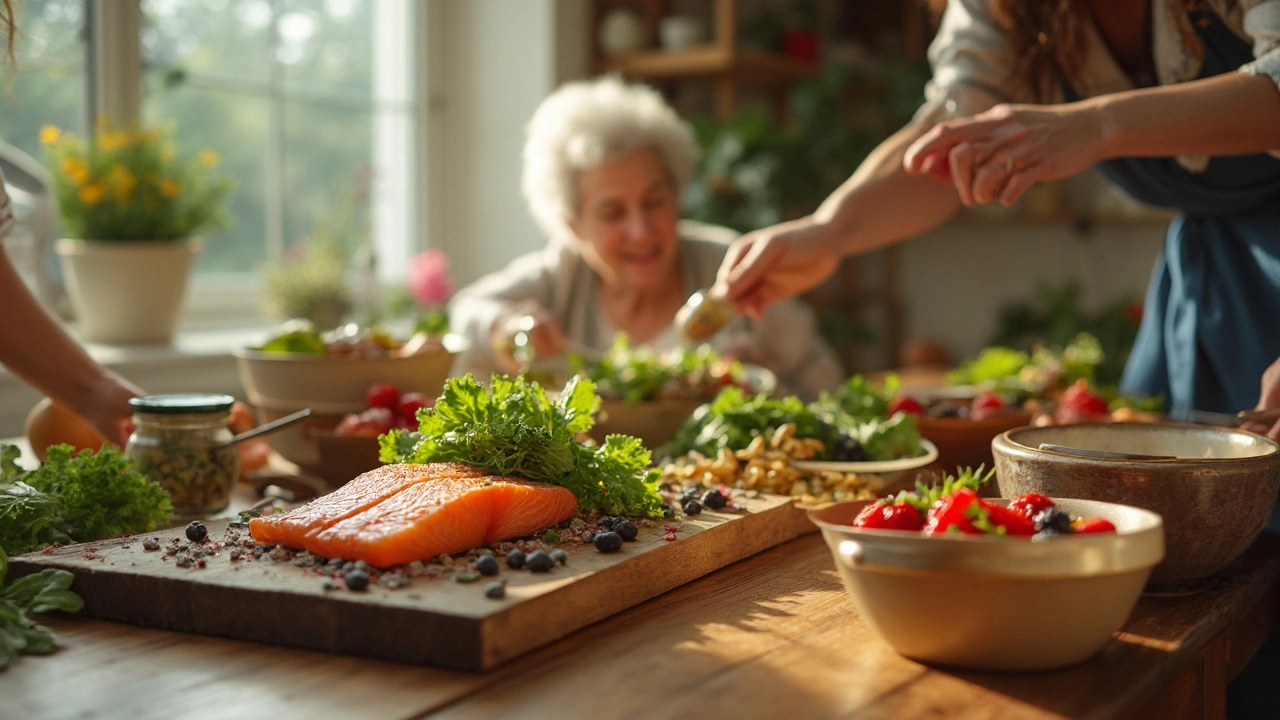Anti-Inflammatory Foods: What to Eat and Why It Matters
Ever feel achy after a big meal or notice your joints acting up on some days? That’s often a sign of hidden inflammation. The good news? Your plate can be a powerful medicine. Swapping a few everyday items for anti-inflammatory foods can calm the fire inside and boost energy without a prescription.
Best Anti-Inflammatory Foods to Add Right Now
Think of a rainbow of flavors: leafy greens, bright berries, and rich nuts. Here are the top picks that research shows calm inflammation:
- Berries – blueberries, strawberries, and raspberries are packed with antioxidants called anthocyanins that neutralize inflammatory cells.
- Fatty fish – salmon, mackerel, and sardines deliver omega‑3 fatty acids (EPA & DHA) that directly block inflammatory pathways.
- Leafy greens – spinach, kale, and Swiss chard contain vitamin K and lutein, both shown to reduce markers of inflammation.
- Nuts & seeds – almonds, walnuts, and chia seeds provide healthy fats and magnesium, helping keep inflammation in check.
- Olive oil – extra‑virgin olive oil is rich in oleocanthal, a natural compound that works like a mild pain reliever.
- Turmeric – the spice’s active ingredient, curcumin, is a superstar for lowering systemic inflammation when paired with black pepper.
These foods are easy to drop into breakfast smoothies, salads, or stir‑fries, so you don’t have to overhaul your diet overnight.
Practical Tips to Make Anti‑Inflammatory Eating Stick
Changing habits is easier when the steps feel doable. Try these tricks:
- Start your day with a bowl of mixed berries and a splash of almond milk – it’s a quick antioxidant boost.
- Swap the usual butter for a spoonful of olive oil when you sauté veggies; the flavor changes, and the inflammation drops.
- Plan a “fish night” twice a week. Grill or bake salmon with lemon and herbs for a tasty, omega‑3‑rich dinner.
- Keep a small jar of walnuts or pumpkin seeds at your desk for a snack that fights inflammation, not sugar spikes.
- Add a pinch of turmeric to soups, sauces, or even scrambled eggs. A dash of black pepper helps your body absorb the curcumin.
Don’t stress about perfection. Even a handful of these changes can lower C‑reactive protein levels, the blood marker doctors use to gauge inflammation.
Remember, the goal isn’t a strict regimen but a sustainable pattern. Pair these foods with a lifestyle that includes regular movement, adequate sleep, and stress‑busting activities like walking or deep breathing. When your body gets the right fuel, you’ll notice less joint stiffness, better mood, and a clearer mind.
So, next time you shop, grab a colorful assortment of anti-inflammatory foods and let your meals do the healing. Your future self will thank you for the simple, tasty choices you make today.
-
8
Diet is a game-changer for people with rheumatoid arthritis, helping to manage inflammation and ease symptoms. This article explores what science really says about food choices, from anti-inflammatory diet tips to the surprising impact of certain meal patterns. Dive into the foods that can ease daily pain—and those that can make it worse. Easy tweaks at the grocery store may help you take control. Real facts, clear advice, and plenty of practical examples make managing rheumatoid arthritis possible, one meal at a time.

